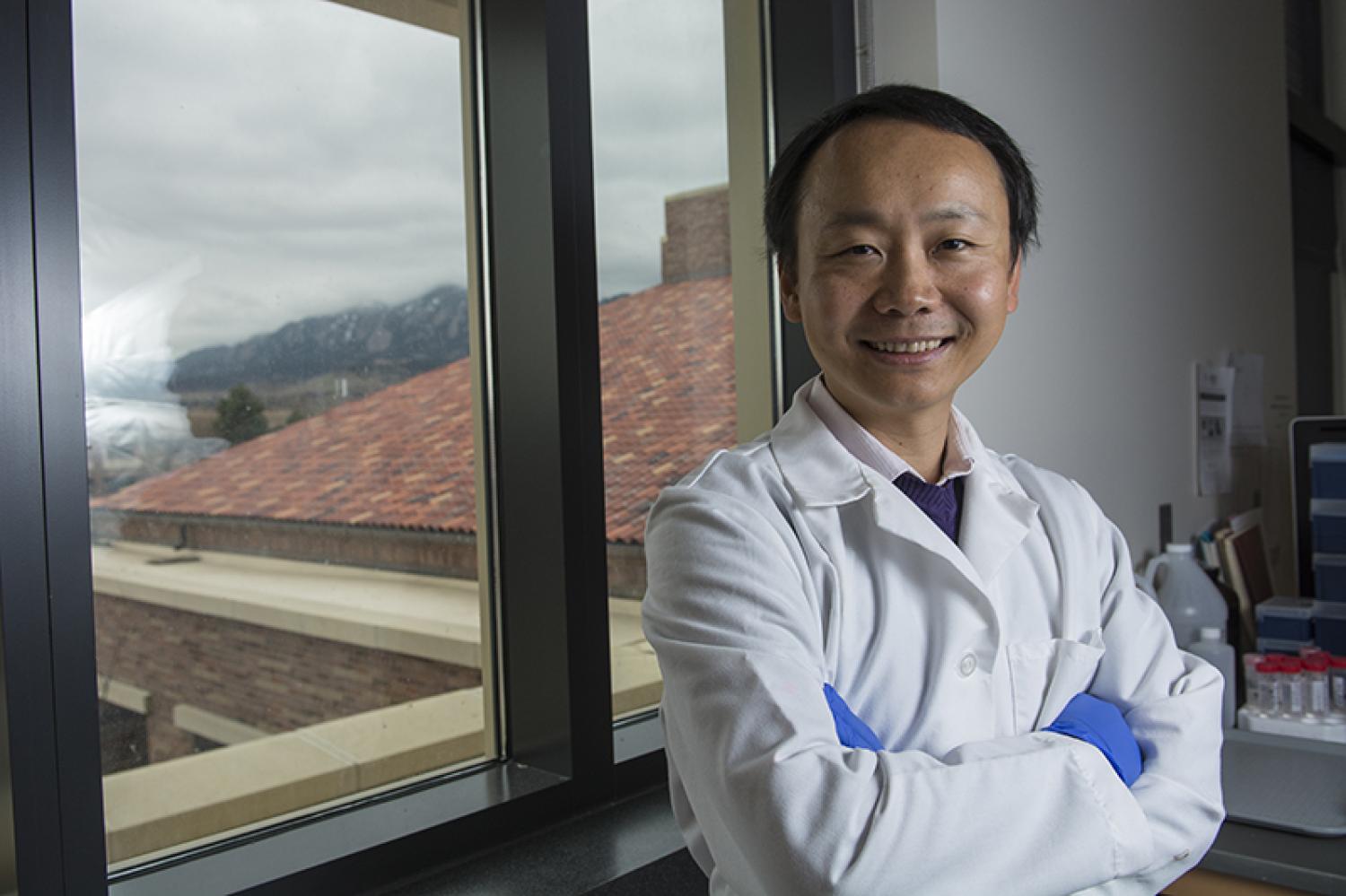Unlocking toll-like receptors

BioFrontiers’ Hubert Yin is unlocking the power of toll-like receptors
Hubert Yin has been thinking about one type of cell receptor since he joined the BioFrontiers Institute, and it is a receptor worthy of that kind of time. Yin, an Associate Professor of Chemistry and Biochemistry, is focusing much of his research on toll-like receptors. These are pattern recognition receptors designed to identify pathogen signals and activate an immune response within the cell. Humans have ten known toll-like receptors. In some cases, the immune response from these receptors needs to be managed, like in the case of many autoimmune diseases, which turn the body’s immunity on itself. In other cases, toll-like receptors can be activated to provide a powerful immune response to a disease, harnessing the body’s own ability to fight off illness.
Toll-like receptors are becoming popular research subjects in many labs around the world because they are the body’s first-responders to many of the viruses, bacteria and fungi that are trying to find a home in our cells. In 1989, scientists first proposed the idea that cells are using pattern recognition to weed out pathogens and keep them out of healthy cells. Toll-like receptors that used this pattern recognition were identified nearly a decade later. Scientists also discovered toll-like receptors in plants and smaller organisms, pointing to their role in evolution protecting the host organism from disease.
“These toll-like receptors have been a central interest of my group since 2007,” says Yin. “These receptors are leading us to new ideas for the treatment of different diseases.”
Because these toll-like receptors are so important to fighting off disease, Yin is interested in modulating them in order to fight a wide variety of illnesses, from HIV to various cancers. Last year, he received a patent for an inhibitor for toll-like receptor 4 that could effectively help patients with scleroderma, an autoimmune disease affecting connective tissues. The inhibitor is expected to help patients prevent muscle necrosis and the thickening of skin and connective tissues that are hallmarks of the disease.
Toll like receptors 1 and 2 (TLR1/2), the focus of much of Yin’s attention lately, sit on the surface of the cells, like sentries, in order to respond quickly to attacks. In an article in Science Advances, the newest open-access journal from the AAAS Science Journals (Cheng et al. Science Advances 2015, DOI: 10.1126/sciadv.1400139). Yin’s research team details their work on these receptors. The paper introduces a new group of small molecule agents developed by Yin’s team that can harness the immune response to disease provided by TLR1/2, making it more potent and specific.
“Novel compounds like these could potentially lead to a new generation of cancer therapies,” says Yin. “TLR therapies are very exciting right now and pharmaceutical companies are now starting to introduce innovative programs to develop TLR7 regulators. CU-Boulder has already filed a patent for our work on TLR1/2, and the intellectual property for this technology has been licensed for commercialization to both EMD Millipore and Tocris Bioscience by CU’s Office of Technology Transfer. We’re excited to see what comes out of this work.”

